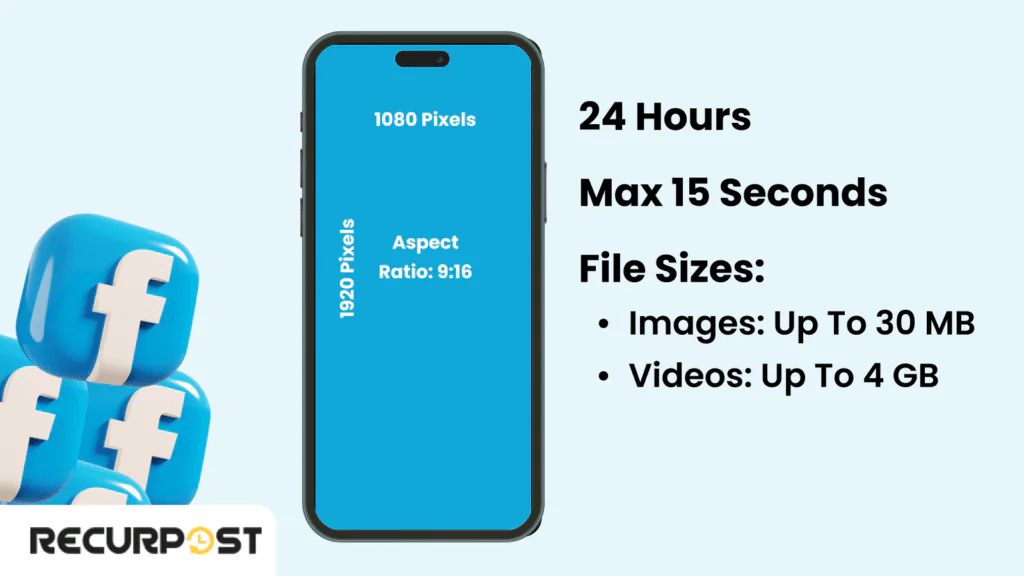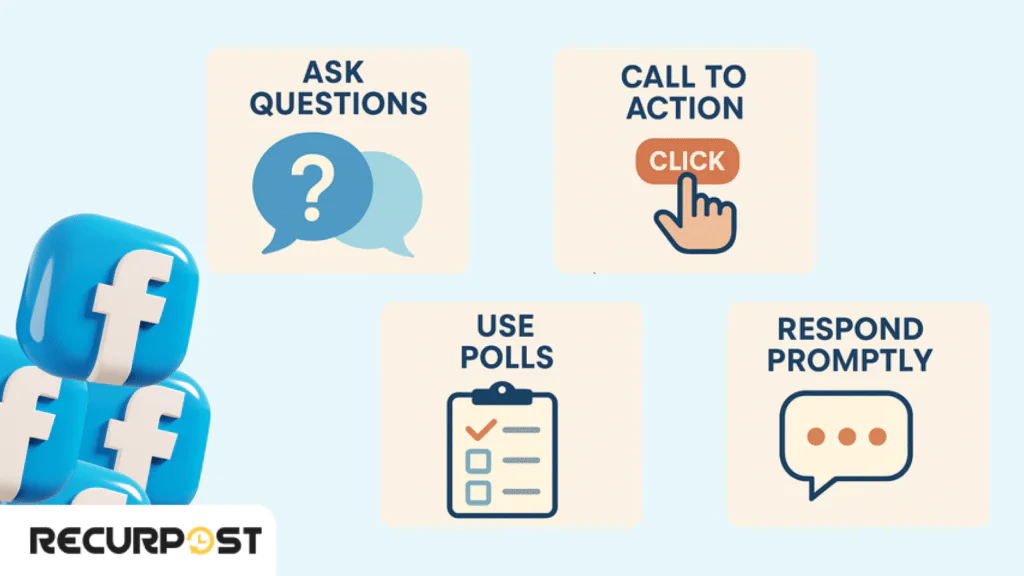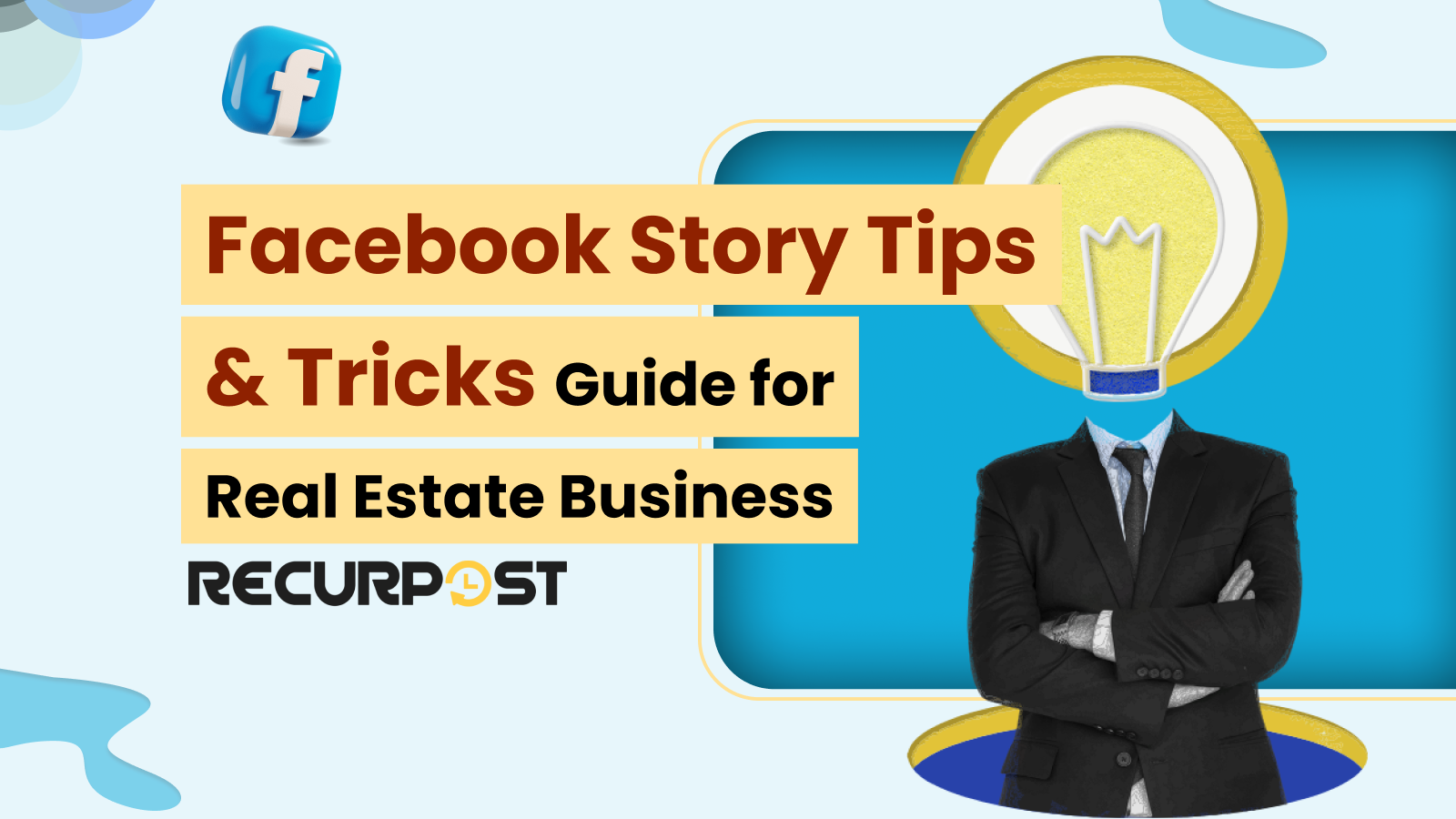Facebook story tips and tricks are no longer just about fun. They’re now a serious marketing boost for real estate agents and agencies. With more than 500 million people using Facebook Stories daily, this format is a top way to stay visible and connect with buyers and sellers.
Why do Facebook Stories work so well? They appear at the very top of the app, catching instant attention. Their 24-hour lifespan adds urgency, driving quick action. Short, visual, and built for mobile-first browsing, they fit right into how today’s audiences scroll and engage online.
For real estate professionals, Facebook Stories open a huge opportunity to showcase listings, share behind-the-scenes content, and post quick market updates. By using Facebook story tips and tricks, agents can stay visible, build trust, and generate qualified leads. Whether it’s promoting a new listing, showing a behind-the-scenes moment, or dropping a quick market tip, Facebook Stories keep you connected and credible.
Facebook Stories: Specs & Features
Before applying Facebook Stories in your content plan, know the technical basics. These details ensure your posts look clean and fit the format.

Here’s what matters most:
- Duration: Each story stays visible for 24 hours.
- Video clips: Up to 15 seconds each.
- Image size: 1080 × 1920 pixels in vertical format.
- Aspect ratio: 9:16 for full-screen mobile viewing.
- File sizes: Images up to 30 MB, videos up to 4 GB.
- Text: No official limit, but shorter text is easier to read.
- Creative tools: Add filters, stickers, music, animated text, and smooth transitions.
- Insights: Track viewers, replies, and sticker or CTA taps.
Facebook Stories use a 9:16 aspect ratio with 1080 × 1920 resolution, supporting 15-second videos and 30 MB images. They include polls, stickers, music, and animated text to drive engagement.
Beyond basics, Facebook story tips and tricks include cross-posting between accounts, automatic archiving to highlights, and custom audience filters that many users miss. To start, tap the story option beside your profile picture on your Facebook page or profile to share moments and access tools fast.

Pro Tip: One of the best Facebook story tips and tricks is using animated text or motion stickers to highlight property features and guide Facebook users toward clear actions like booking a tour or sending a DM through Facebook Messenger.
8 Popular Facebook Story Tips and Tricks for Real Estate
Facebook Stories matter more for real estate than ever before. Millions of users check Facebook daily, and stories give agents visibility by appearing at the top of both mobile and desktop versions of the app, unlike traditional posts.
Facebook stories help you create engaging content through business pages or profiles using various formats. Connecting a Facebook page enables story creation, crossposting, and interactive elements. You can share short videos, add custom links, and reach wider audiences with content that feels more alive than static posts. Pages use stories to engage audiences and guide actions through polls, countdowns, and calls-to-action, keeping your content strategy fresh in social media marketing.
Using Facebook Stories alongside Snapchat and LinkedIn stories boosts brand visibility and audience engagement. For strong business use, share behind-the-scenes content, include interactive features, and track performance metrics often. That way, your Facebook story tips and tricks become a reliable way to stay visible and connected.
#1 Facebook Story Tips and Tricks That Get Results

Facebook Stories aren’t just about staying active. They’re about timing and structure. Tailor your story content to your target audience for better outcomes. Here are four Facebook story tips and tricks real estate agents can use to get more from every post:
Post Timing: Reach People When They’re Active
Posting time matters. Facebook users check most in the morning, at midday, and in the evening. Real estate updates work best in those windows. Use Facebook insights to track when your audience views stories most, and post at those times.
Consistent posting times create habits. Audiences expect updates, helping your stories appear higher in their story feed.
Posting Frequency: Stay Visible Without Flooding Feeds
Facebook Stories perform best when posted 3 to 5 times daily during peak hours. That’s enough to stay visible without becoming noisy. Spread them out like this:
- Morning: New listing, quick market tip, or win
- Afternoon: Behind-the-scenes showing or staging
- Evening: Client feedback, sold-home celebrations, or a poll
This pattern keeps audiences engaged from morning to evening.
Showcasing Listings: Bite-Sized Story Slides
Don’t place a full walkthrough in one slide. Break it into short, clear Facebook Stories:
- Slide 1: Curb appeal or entrance + label (“New on the Market”)
- Slide 2: Feature room (kitchen, living room, or main bedroom)
- Slide 3: Bonus detail (patio, view, or workspace)
- Final slide: Call-to-action (“Message me for details”)
Keep layouts clean, visuals bright, and messages clear.
Virtual Tours & Open Houses: Hype Before, During, After
Use Facebook Stories with countdown stickers or teaser images to build hype. During tours, post short clips showing finishes, layouts, or highlights. After events, share recaps with guest quotes, final views, and private invites. This creates three touchpoints: before, during, and after.
#2 Creative Facebook Story Tips and Tricks for Realtors

Stories work best when they feel personal and real. They don’t need to be perfect, just connect. Facebook story tips and tricks work best with interactive formats like polls, Q&As, behind-the-scenes clips, and client testimonials. These Facebook Stories keep viewers watching and encourage tapping instead of passive scrolling. With a mix of photos, videos, stickers, and polls, you boost engagement and create a dynamic way to connect with your audience.
Polls & Quizzes
Use poll stickers to spark quick reactions. Try questions like:
- “Which kitchen style would you pick?”
- “Would you rather: Pool or Home Theater?”
- “Guess the listing price!”
Quiz stickers test local market knowledge or run “This or That” home comparisons. These tools turn casual viewers into active participants while giving valuable feedback.
Q&As with Clients
Use question stickers to invite audience questions:
- “Ask me anything about home buying.”
- “Curious about the local market?”
- “Need tips before your next showing?”
Answer with short clips or text to stay approachable. You can also ask viewers questions and share their responses in later stories.
Behind the Scenes
Viewers love off-camera moments. Share quick clips from your car between showings, staging setups, or first walk-throughs of new listings. This adds personality to your brand, creating familiarity before prospects meet you.
Client Testimonials
Turn client thank-you messages into Facebook Stories. Pair text with sold-home photos or short acknowledgment clips. With consent, record quick testimonial videos, even 10-second clips work well. Keep testimonials authentic and natural.
#3 Facebook Story Tips and Tricks for Professional Design

Facebook Stories look professional with consistent brand colors, clean layouts, and editing tools like Canva or InShot. They also benefit from strong music choices and a clear visual hierarchy to hold attention. You don’t need a design background—just simple habits, the right tools, and a few Facebook story tips and tricks most users overlook. Adding polls or stickers also keeps stories interactive and engaging.
Filters & Layouts
Stick to brand colors and fonts. Keep logos small in one corner. Use whitespace for glance-readable messages. Apply filters consistently across clips. Match colors and mood to your tone, bright filters for upbeat content.
Add Music or Voice-Over
Music instantly transforms the story atmosphere. Select upbeat tracks for walk-throughs, soft music for testimonials, or seasonal tunes for listing tours.
Voiceovers effectively describe spaces without on-camera presence. Narrate home videos to guide viewers through visual elements.
Use These Apps
Skip complex editing software. These apps keep it simple:
- Canva: Branded templates and layouts.
- InShot: Trim video, add text, music, transitions
- StoryArt: Frames with clean designs
- Adobe Express: Animations and brand kits.
Stick to one or two apps for speed and consistency.
AI Tools for Speed and Style
Short on time?
Use Meta’s AI Generator for captions, message tweaks, or quick image adjustments. It saves effort and clears creative blocks.
Hidden Facebook Tricks for Stories
Some hidden tricks make Facebook Stories easier and faster:
- Double-tap a story to like it without opening full view.
- Hold your own story to save it to the camera roll.
- Use “Create” mode for text-only stories with animated backgrounds.
- The story archive trick saves all stories privately in settings.
- Cross-post between your profile and business page to skip duplicate uploads.
#4 Facebook Story Tips and Tricks for Visibility

Getting more eyes on Facebook Stories isn’t luck. It’s small tweaks and hidden Facebook story tips and tricks that make your content easier to find and share. With the right moves, you can reach larger audiences and spark more participation.
Location Tags & Hashtags
Tag locations in every story, such as neighborhoods, cities, or landmarks. Location tags raise visibility in local story feeds. Add 1–2 clear hashtags like #NewListing or #CityHomes. Pick ones that match your content directly.
Tag Partners & Clients
Tag partners, such as photographers, stagers, lenders, or clients, in stories. Their reposts extend your reach to new audiences. This also shows real connections beyond simple property promotion.
Story Highlights
Facebook Stories vanish after 24 hours, but Highlights save your best ones on your profile. Add stories to Highlights by tapping the icon in the bottom right corner.
Create folders such as:
- Listings
- Sold Homes
- Tips
- Reviews
- Open Houses
Use simple icons or branded images as covers. This turns your Highlights into a browsable mini-portfolio.
#5 Facebook Story Tips and Tricks for Engagement

Facebook Stories spark higher engagement when they include clear call-to-action prompts, interactive stickers like polls and quizzes, and direct questions. These interactive touches encourage viewers to tap, vote, and reply instead of scrolling past. Facebook story tips and tricks that invite action stick with people, turning quiet viewers into active leads.
Facebook Stories also support customizable CTA buttons like “Book Now” or “Shop” through the link icon, guiding viewer actions.
Use CTAs
Add a next step to every story with direct prompts:
- “DM for details”
- “Want a private tour? Message now”
- “Tap here to guess the price”
Even simple lines like “Swipe up” or “Vote above” spark engagement. Match each CTA to the story content for best results.
Tag Local Businesses
Mention nearby spots, such as cafés, gyms, or services, when showcasing properties. This shows local knowledge and often prompts businesses to reshare with their followers. These mentions build trust by pointing out community amenities buyers care about beyond the property.
Interactive Stickers
Facebook Stories with polls, emoji sliders, or quizzes hold longer viewer attention. Ask fun questions:
- “Do you prefer this layout?”
- “Would you paint this room?”
- “Which outdoor space feels more inviting?”
These small touches boost story performance and reveal what your audience likes.
Connect Stories to Lead Capture
Facebook Stories create easy paths to conversations. Link to Messenger, landing pages, or short lead forms. This low-pressure approach makes follow-up simple with people already interested. Add these Facebook story tips and tricks into your routine to keep leads flowing.
#6 Facebook Story Tips and Tricks for Analytics

Posting is only step one. Real progress comes from checking performance data. Facebook Stories include built-in metrics that show how your content lands. These Facebook story tips and tricks help real estate pros track engagement and make smarter choices.
Key Metrics
Keep an eye on these metrics:
- Reach: Unique viewers who saw your story
- Impressions: Total views, including repeats
- Replies: Direct DMs from viewers
- Sticker Taps: Poll, quiz, slider, or link clicks
- Completion Rate: % who watched the full story sequence
High completion rates mean your content held attention from start to finish.
Interpret Results
If your stories get more replies than usual, look at the cause: topic, timing, or format. Spot patterns in viewer retention. Compare metrics across weeks or months. Use strong-performing content types and posting times as guides for what to do next.
Adjust & Improve – Make Small Tweaks That Matter
If viewers skip early slides, open with sharper visuals. If polls do better than videos, add more interactive features. Small tweaks in format, tone, or timing keep content fresh and audiences engaged.
#7 Facebook Story Tips and Tricks for Privacy & Targeting

Targeted sharing makes Facebook Stories more personal than sending every post to all followers. Use Facebook story tips and tricks like custom audience lists that remember your choices, making future posts faster.
Custom Story Views
Privacy settings let you choose a custom audience for each story. Share with warm leads, VIP clients, or niche buyer groups without broadcasting to all followers. Create lists or pick individuals when sending buyer updates, market notes, or previews. This makes stories feel like a personal message instead of generic content.
Groups & Close Friends
On Instagram, “Close Friends” gives VIP buyers or returning clients early looks at listings. On Facebook, private groups work well for past clients, investors, or niche buyers. Share price drops, previews, or rare properties tailored to their interests.
Targeted Content
Run local campaigns that speak to neighborhoods or cities. For first-time buyers, skip jargon and keep language simple. Matching content to each segment creates a natural, conversational experience instead of an ad.
Extra Audience Tricks
- Save custom lists (“VIP Buyers,” “Past Clients,” “Local Partners”) for quick sharing.
- Exclude people from certain stories without unfriending them—useful for competitor insights or sensitive info.
- Facebook remembers your last audience selection, so if you share with the same group often, it suggests them next time.
#8 Facebook Story Tips and Tricks for Consistency

Staying consistent with Facebook Stories doesn’t take much when you use the right tools. Schedule stories in advance with built-in or third-party platforms to automate posts. These Facebook story tips and tricks keep your content steady and stress-free.
Meta Business Suite
Schedule Facebook Stories with Meta Business Suite on desktop at no cost. Pick a time, upload content, and set it to auto-publish. It’s great for agents who batch posts or want to share during busy hours without being tied to their phone.
RecurPost
RecurPost handles multi-account management for teams. Schedule stories, assign posts, and track performance from one dashboard. This streamlines work for agencies or teams managing more than personal profiles.
Story Content Calendar
A content calendar prevents running out of ideas. Try weekly themes:
- Mondays: New listings
- Wednesdays: Tips or polls
- Fridays: Client wins or shoutouts
Calendars also keep stories in line with trends and audience interests.
Social Media Content Calendar

Branded Templates
Templates save time while creating polished stories. Build reusable layouts for listings, reviews, and price drops using brand colors, fonts, and logos.
Canva and Adobe Express let you duplicate and update templates without starting from scratch.
Common Mistakes to Avoid
Common mistakes in Facebook Stories include posting too often, skipping analytics, using low-quality media, or ignoring simple Facebook story tips and tricks like clear calls-to-action. Skipping location tags or sending the same content to all audiences also hurts results. Avoid these mistakes, and your Facebook story tips and tricks will keep every post sharp and effective.
(i) Posting Too Much or Too Little: Balance your posting. Too many posts overwhelm; too few reduce visibility. Aim for 3–5 stories spread across peak engagement times.
(ii) Ignoring the Numbers: Views, replies, and sticker taps reveal what works. Check story insights weekly to guide future posts.
(iii) Low-Quality Media: Blurry photos, cluttered slides, or off-frame videos lower the impact. Use crisp visuals that fill the screen and keep details clear.
(iv) No Clear Next Step: Stories without CTAs get fewer responses. Prompts like “DM for details” or “Vote above” convert viewers into leads.
(v) Skipping Location Tags or Hashtags: Location tags and hashtags expand reach. Add property-specific tags and topic hashtags for better discovery.
(vi) Sending the Same Story to Everyone: Don’t send identical posts to all followers. Use custom views for select audiences, like early previews for active buyers.
(vii) Treating Stories as an Afterthought: Don’t treat stories as filler. Give them the same care as listings or posts, or viewers will tune out.
Summing up
Buyers see hundreds of Facebook Stories each day, which is why using the right Facebook story tips and tricks makes all the difference. The ones they remember feel authentic, timely, and interactive. Using Facebook story tips and tricks with consistency and simple, market-relevant content matters more than advanced editing or tools. Stories vanish in 24 hours, but the right content at the right moment leaves a lasting impression.
Stay present. Keep it simple. Keep it human. And use these Facebook story tips and tricks to turn short posts into lasting connections.
FAQs on Facebook Story Tips and Tricks
1. Can I schedule Facebook Stories from desktop?
Yes. Use Meta Business Suite on a desktop to upload content, set a time, and auto-publish. This lets you plan stories without needing your phone during busy hours.
2. What’s the difference between Facebook Stories and Instagram Stories?
Facebook Stories work well for business pages with a broader reach and lead generation. Instagram Stories lean toward personal branding and creative effects. Many agents use both together.
3. Can I add links to my Facebook Stories?
Yes. Add call-to-action buttons like “Shop Now” or “Book Now” through the link icon. You can also add custom links or connect to Messenger for direct lead capture.
4. How do I measure story performance?
Look beyond views. Track taps, replies, and completion rates to see which stories hold real attention.
5. Do Stories reach more people than posts?
Yes. Facebook Stories often reach more people than posts because they appear at the top of feeds and expire in 24 hours, creating urgency and faster views, one of the many reasons to apply smart Facebook story tips and tricks consistently.

Ruchi Dhimar is a skilled content writer with 5 years of experience. She is passionate about crafting compelling narratives, specializing in writing content for different industries.





